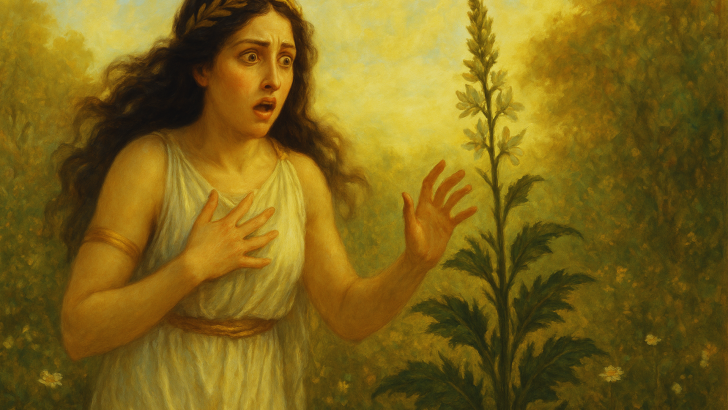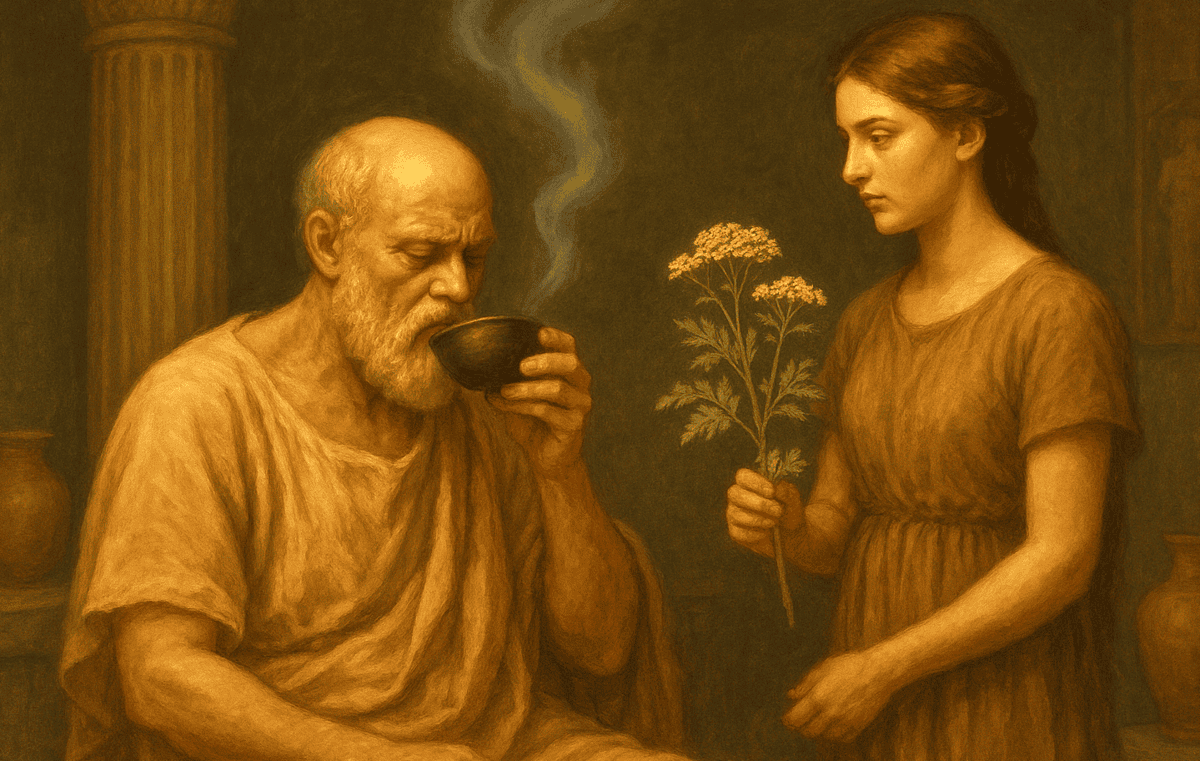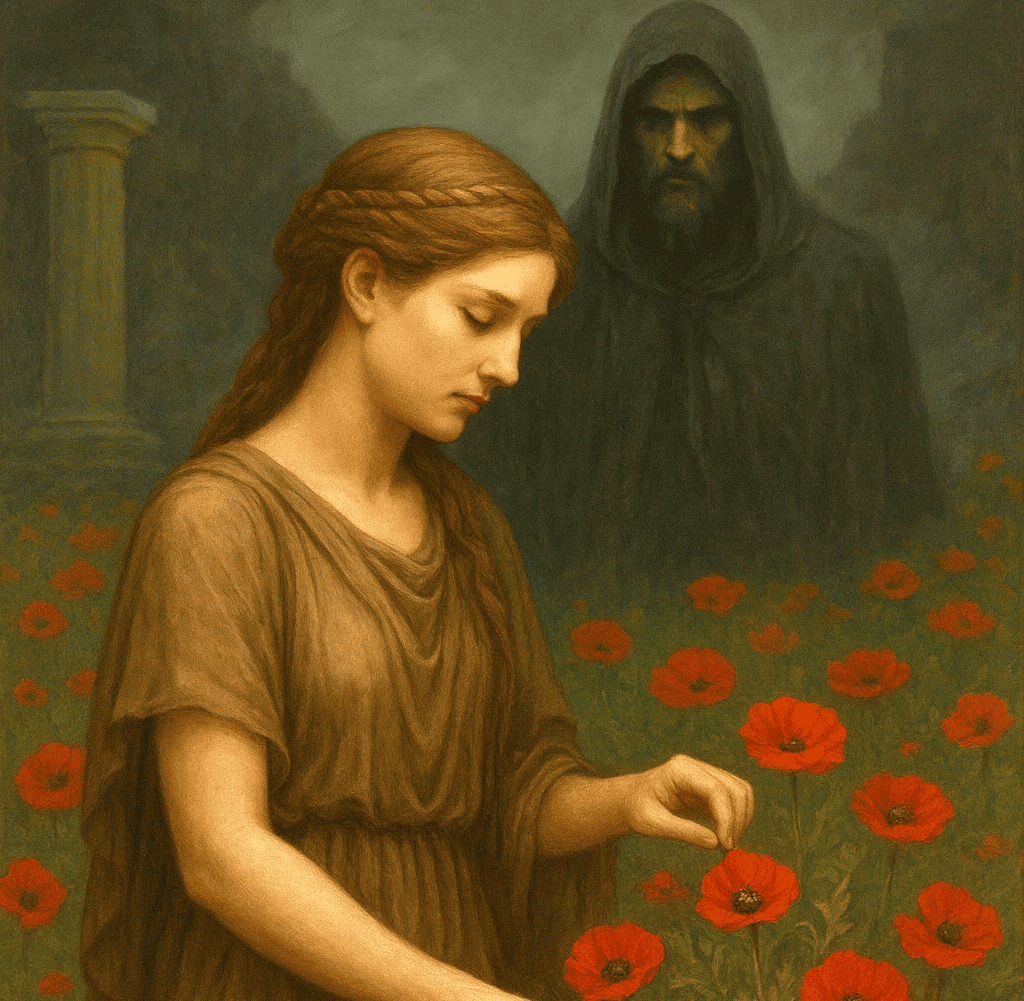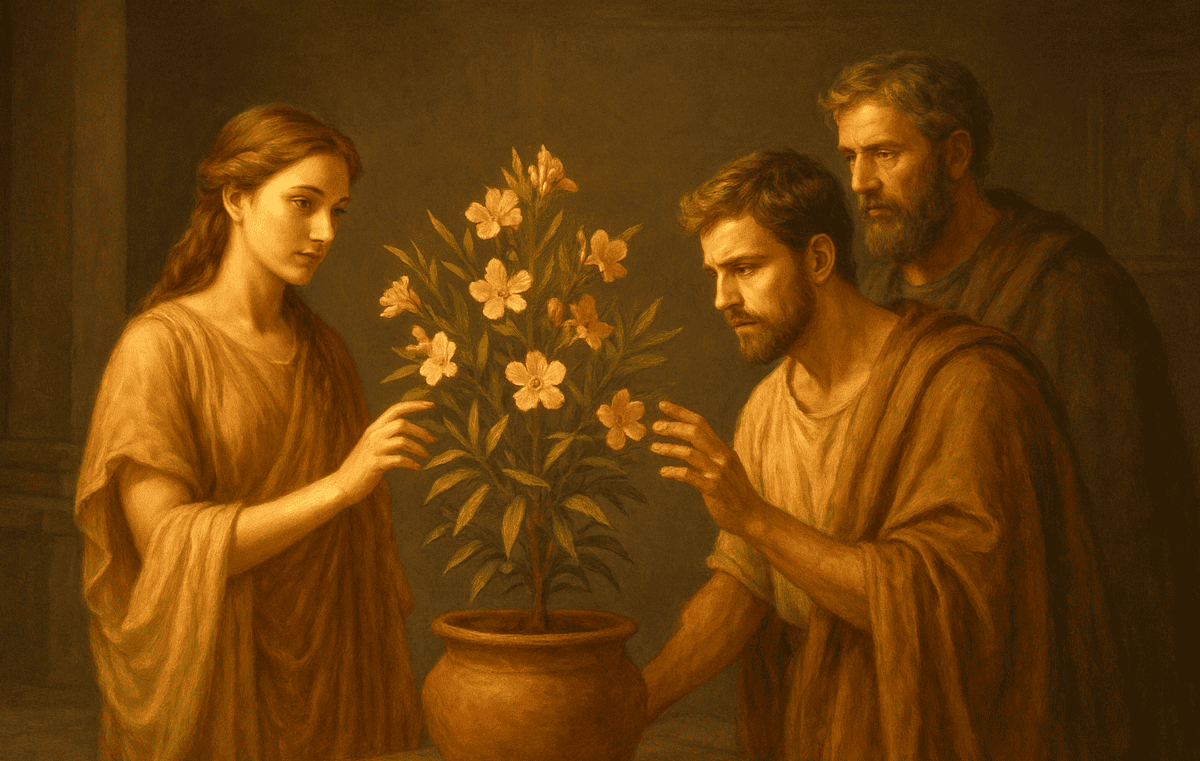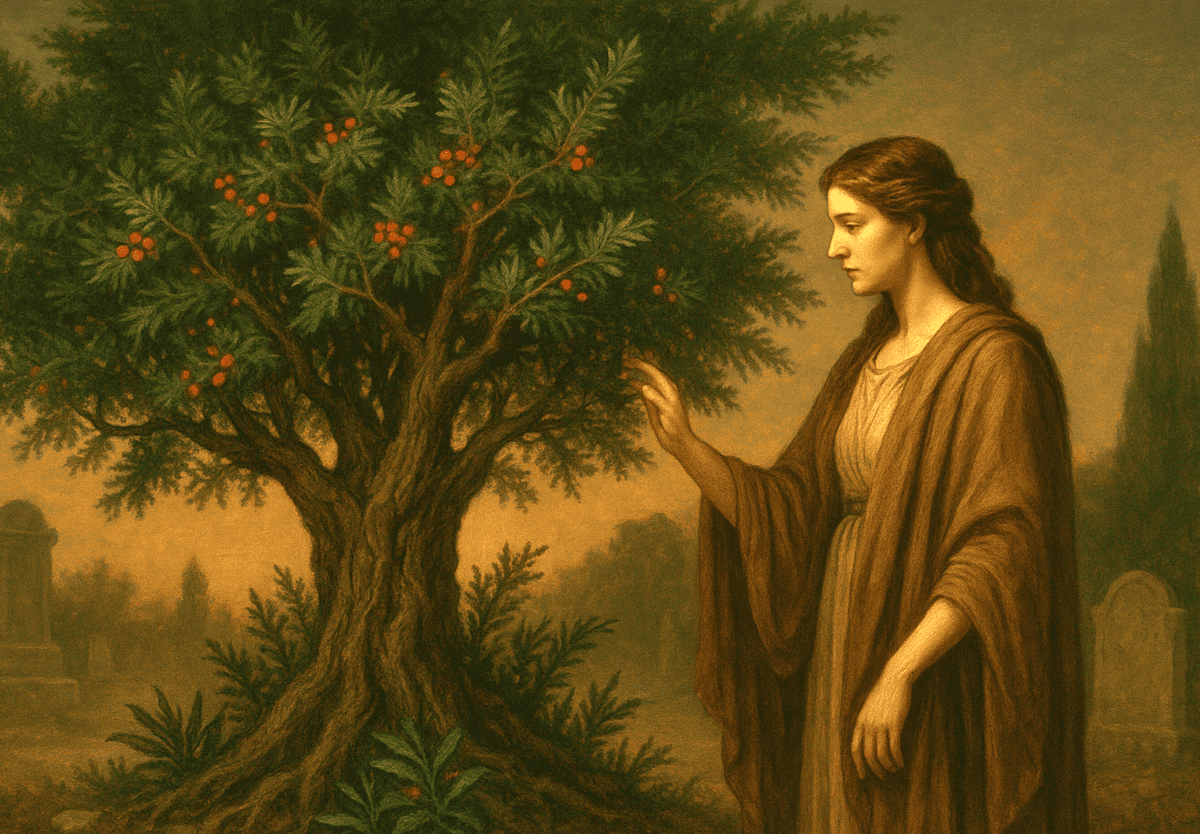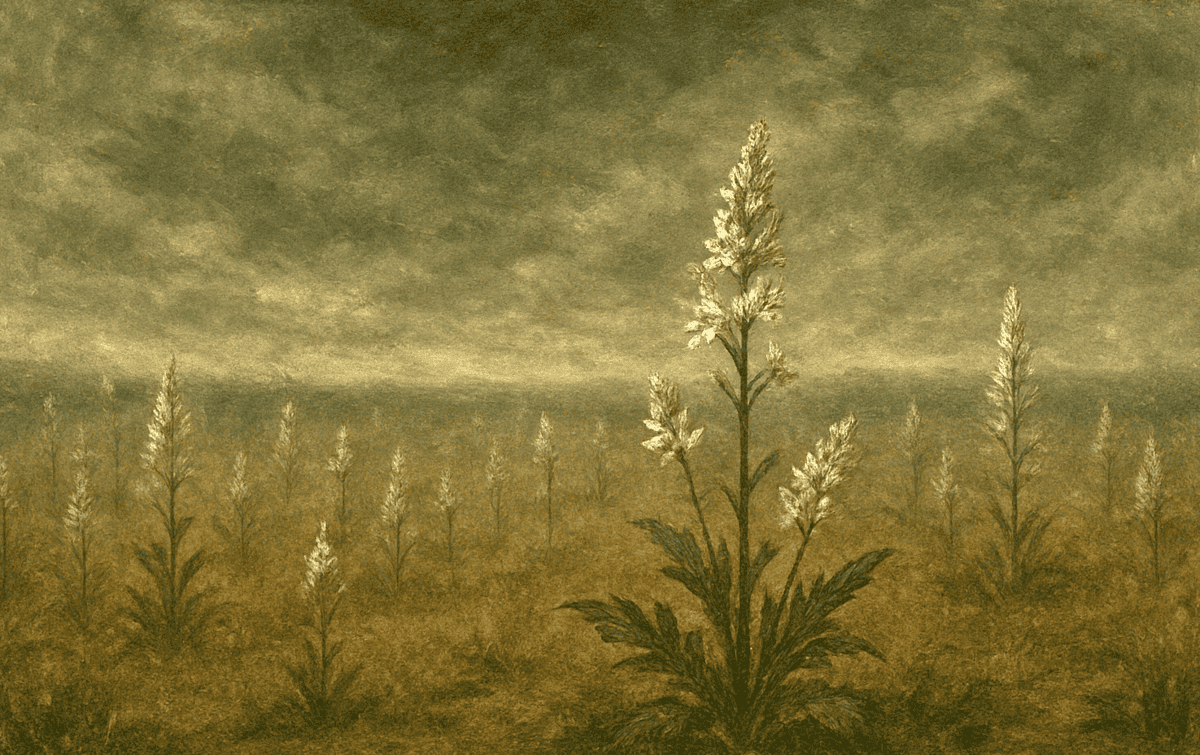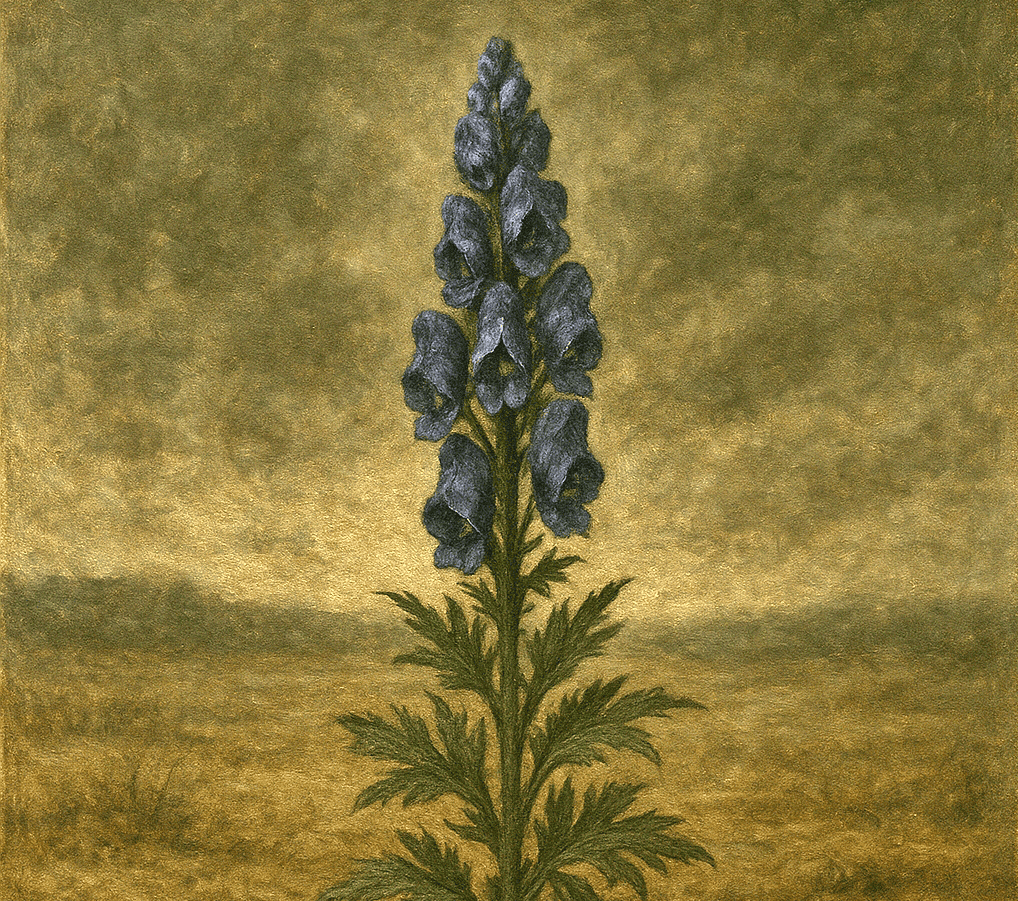Greek mythology is full of shimmering gods, tragic heroes, and legendary quests, but often overlooked are the plants that play a darker role in these stories.
Some plants were considered sacred, linked to healing, love, or divination, but others carried a shadowy reputation, associated with curses, death, or betrayal.
These cursed plants were not just storytelling devices; in the eyes of the ancients, they embodied forces that could bless or harm, protect or destroy.
When people in ancient Greece whispered about such plants, they weren’t merely repeating folktales — they were speaking of vegetation believed to hold real supernatural influence, shaping the lives of mortals and the will of the gods.
1. The Deadly Hemlock
Perhaps the most infamous of all cursed plants in Greek lore is hemlock. Its reputation was solidified in history when Socrates drank a cup of its poison as punishment for “corrupting the youth.”
In mythology, the plant was tied to endings, silence, and fate. Hemlock symbolized not only death but also an imposed destiny — the kind you could not escape, no matter how wise or strong you were.
Ancient Greeks believed its essence contained a chilling power, connecting those who ingested it to the underworld.
To encounter hemlock was to be reminded of life’s fragility and the inevitability of mortality. It became a living emblem of forced surrender, feared as much as it was respected.
2. The Poppy of Eternal Sleep
At first glance, the poppy seems innocent with its bright red petals swaying in the wind, but in Greek myth, it was steeped in associations with eternal sleep and oblivion.
Linked to Hypnos, the god of sleep, and Thanatos, the god of peaceful death, poppies were considered a plant of dangerous rest.
When Persephone was abducted into the underworld, poets often described fields of poppies blooming around her — as if signaling her forced descent into eternal cycles of death and rebirth.
While some used poppy seeds for medicine, the ancients also believed the plant could rob a person of their will, drawing them into forgetfulness and shadow.
Its cursed nature lay in the fine line it tread: between comfort and fatal surrender, between gentle dreams and eternal silence.
3. The Oleander of False Beauty
With its lush blossoms and intoxicating fragrance, the oleander lured admirers only to conceal its poisonous heart.
Greek myth treated this plant as a trickster of the natural world, a botanical siren that invited touch and admiration while hiding lethal consequences.
Symbolically, oleander stood for deception and the danger of trusting appearances. It reminded mortals that beauty could be deadly, and that nature itself was full of illusions that tested human judgment.
Some stories tied it to cursed love, where lovers who exchanged oleander blossoms found only betrayal and grief. To hold an oleander was to hold both allure and destruction in one hand.
4. The Yew of the Underworld
The yew tree carried an ominous aura throughout ancient Europe, and in Greece, it was no different.
Its dark evergreen needles and red, blood-like berries made it a natural symbol of death and the passage to Hades.
The ancients believed yews were planted at necropolises not just for decoration but because the tree itself marked the thin boundary between life and death.
In myths, it was said the yew whispered to spirits, carrying curses or guiding souls unwillingly into the underworld.
Symbolically, it was the cursed sentinel of mortality, a tree that thrived in graveyards and reminded mortals of eternity’s weight.
Its presence was both feared and respected, a living omen rooted deeply in the soil of endings.
5. The Asphodel of Forgotten Souls
In the Homeric vision of the underworld, vast fields of asphodel stretched endlessly, where the ordinary dead wandered in shades of gray existence.
Unlike the honored heroes who reached the Elysian Fields, those who lived unremarkable lives were bound to walk among the asphodel.
This flower became a cursed emblem of mediocrity, anonymity, and eternal wandering.
The plant’s symbolism was not about fiery punishment but about the sorrow of being forgotten, condemned to a shadowed existence without glory or memory.
To the Greeks, the asphodel was not a flower to celebrate but one to dread, for it represented the fate most mortals could not escape — obscurity and loss of identity in death’s domain.
6. The Narcissus of Self-Destruction
The story of Narcissus is one of the most famous cautionary myths in Greek tradition, and the flower that sprang from his demise became forever cursed by his fate.
Narcissus, the youth who fell in love with his own reflection, wasted away until he transformed into the delicate flower that bore his name.
The narcissus plant symbolized self-obsession, vanity, and the destructive power of desire turned inward.
Unlike other cursed plants tied to external poisons or gods’ punishments, this one embodied the curse that comes from within: the inability to look beyond oneself.
Its beauty was undeniable, but it carried the mark of tragic self-destruction, reminding mortals of the dangers of unchecked pride.
7. The Aconite of Hecate
Also known as wolfsbane, aconite was a plant with deep roots in witchcraft, often associated with the goddess Hecate.
Legends claimed it sprang from the spittle of Cerberus, the three-headed hound of Hades, when Heracles dragged him into the world of the living.
From such monstrous origins, aconite naturally bore a cursed aura. Its symbolism was bound to fear, transformation, and the hidden dangers lurking at the edge of human experience.
The ancient Greeks used it cautiously in rituals, believing it could channel the power of Hecate herself, opening doors to realms that mortals were not meant to tread.
A single mistake with the plant could mean death, making aconite a dangerous emblem of forbidden knowledge and perilous magic.
8. The Black Hellebore of Madness
Hellebore was sometimes used in ancient medicine, but in myth it carried a darker side — madness and ruin. One tale told of King Athamas, driven insane after consuming it, leading to violence and bloodshed.
Black hellebore especially was seen as cursed, tied to forces of uncontrollable frenzy and destructive impulse.
Unlike hemlock, which symbolized a silent end, hellebore embodied chaos unleashed, turning reason into madness.
It became a plant that symbolized the dangerous unpredictability of life, a reminder that sanity itself was fragile and could be toppled by forces both natural and divine.
For the Greeks, hellebore stood as a cursed warning of how quickly the mind could unravel when touched by the wrong influence.

Sempre senti uma forte ligação com o Divino desde o meu nascimento. Como autora e mentora, a minha missão é ajudar os outros a encontrar o amor, a felicidade e a força interior nos momentos mais sombrios.

